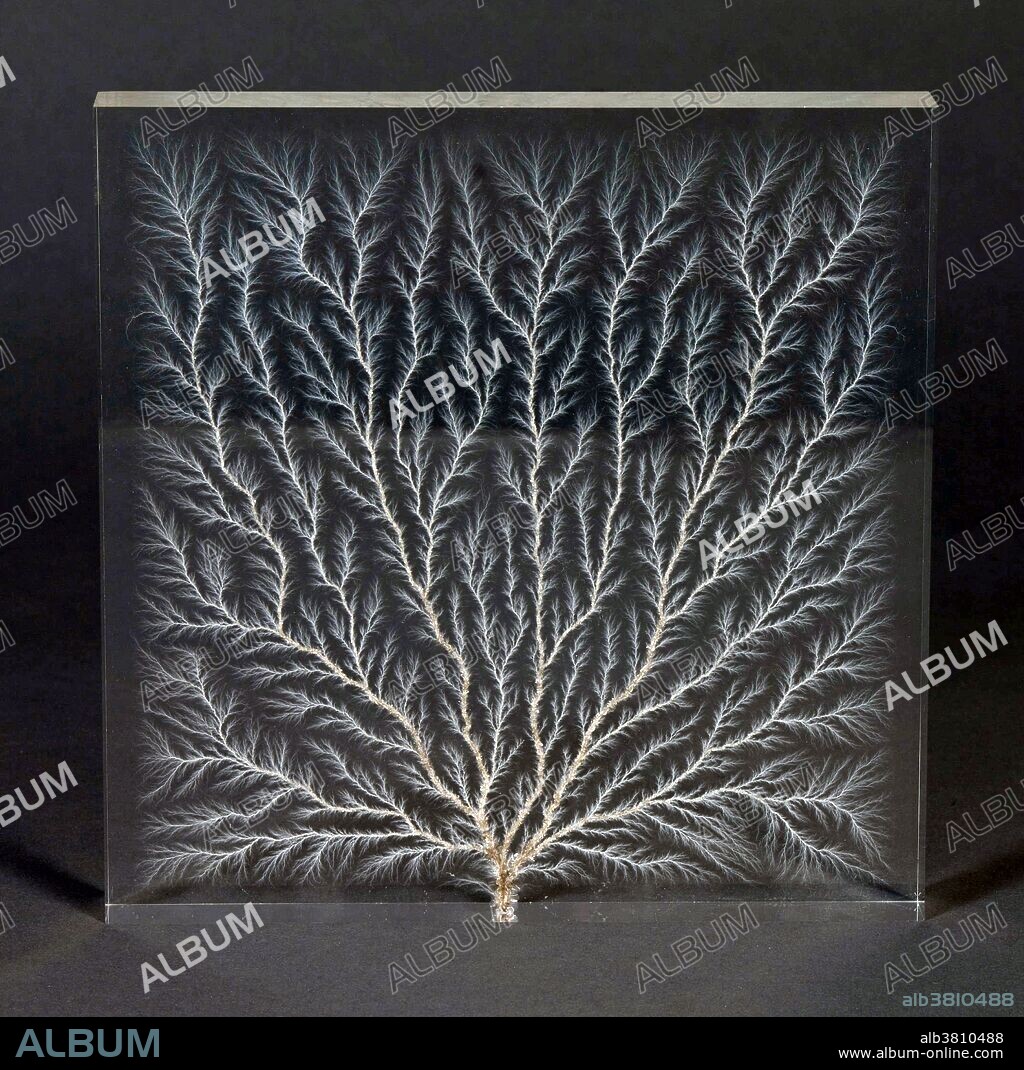alb3810488
Lichtenberg Figure, Electron Tree

|
Zu einem anderen Lightbox hinzufügen |
|
Zu einem anderen Lightbox hinzufügen |



Haben Sie bereits ein Konto? Anmelden
Sie haben kein Konto? Registrieren
Dieses Bild kaufen

Titel:
Lichtenberg Figure, Electron Tree
Untertitel:
Siehe automatische Übersetzung
This Electron Tree was a gift to the National Institute of Standards and Technology (NIST) from the UK's National Physical Laboratory (NPL) in celebration of NIST's centennial in 2001. An Electron Tree, also known as a "Lichtenberg Figure", is a small Perspex block which has been internally fractured by electrons escaping through a tiny break in the Perspex's base. The pattern the electrons make in the Perspex as they rush out of the block looks like a tree, or fern-like structure. The tree was made at NPL using an Electron Linear Accelerator (Linac), which delivers beams of electrons to a precise fixed point. Linacs are commonly used in treatments to kill cancerous cells in the human body, where accuracy of the beam is critical to ensure that the cancerous cells are uniformly hit during the treatment and do not damage the healthy surrounding cells.
Bildnachweis:
Album / NIST/Science Source
Freigaben (Releases):
Model: Nein - Eigentum: Nein
Rechtefragen?
Rechtefragen?
Bildgröße:
3600 x 3575 px | 36.8 MB
Druckgröße:
30.5 x 30.3 cm | 12.0 x 11.9 in (300 dpi)
Schlüsselwörter:
 Pinterest
Pinterest Twitter
Twitter Facebook
Facebook Link kopieren
Link kopieren Email
Email
